Saturday March 4, 2016
When millwright Ira White arrived at the north end of what would become Unionville in 1839 he recognized the east half of lot 13 in the 5th concession to be an ideal site to harness the water power of Bruce Creek. He built a sawmill first and then set about cutting the wood for the grist mill he built where the creek crosses Main Street in Unionville. This street was originally the winding lane to the mill but soon became lined with homes and businesses as the community grew around the mills. It is believed that White named his mills Union Mills when Upper and Lower Canada were united in 1841. When a name was needed for the post office Unionville was selected. An archive photo of the mill is seen in the cover picture. The area along the main street has now been declared as a cultural heritage district because of it’s unique collection of heritage buildings that demonstrate many architectural styles from log houses to condos.
Toogood pond was named after Arthur Toogood who owned the property prior to the town of Markham buying it in 1980. We parked on Main Street in the public lot across the street from the original site of Union Mills and walked along Bruce Creek toward the dam. An early name for the mill pond was Willow Pond and the reason for this can still be seen today in the old willow trees that line the sides of Toogood Pond.

On the east side of Toogood Pond is a pavilion with restrooms that are open and heated at this time of year. There is also a viewing deck and restaurant. This picture is taken from the fishing platform that is built out into the pond on the west shore.

William Berczy led a group of about 67 families of Pennsylvanian German settlers into the woods north of Toronto and founded what would become Markham. They completed 15 miles of Yonge Street between Eglinton Avenue and Elgin Mills and one of his group was Philip Eckardt. Berczy Creek flows into Toogood Pond and is named after Berczy. The trail criss-crosses the creek several times before reaching 16th Avenue which runs along the south side of lot 16. One of the bridges across the creek can be seen in the picture below. By walking east on 16th avenue for 1 kilometer you will come to Bruce Creek which leads back to the pond. A little side detour to Kennedy Road will bring you to a surprising log home and pioneer cemetery.
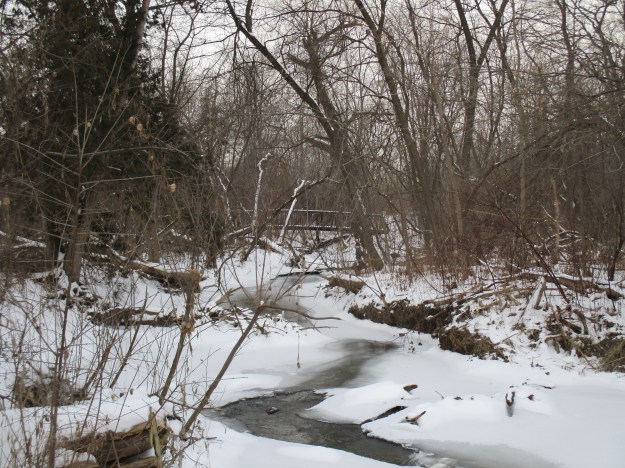
The oldest surviving home in the community of Unionville is known as the Philip Eckardt Log House. Lot 17 in the 6th concession was first granted to Frederick Westphalen in 1794, when he arrived with Berczy, and he received his crown patent in 1803. In order to receive the full ownership of the property a settler had to complete some basic requirements including the clearing of 5 acres of land, the construction of a home at least sixteen by twenty feet and the opening of the road allowance along the property. Therefore, there was a log house on the property before Philip Echkardt arrived in 1808 and it is very likely that the home credited to him was already there when he purchased the lot. The house was used to host Lieutenant Governor Simcoe when he visited the area. It has been altered several times over it’s 200 year life and siding has been added over the original log construction.

After following Bruce Creek south from 16th Avenue you return to the top of Toogood Pond. This pond has two creeks that flow into it and supports a large wetland. A long wooden boardwalk has been constructed that crosses both Berczy Creek and Bruce Creek.
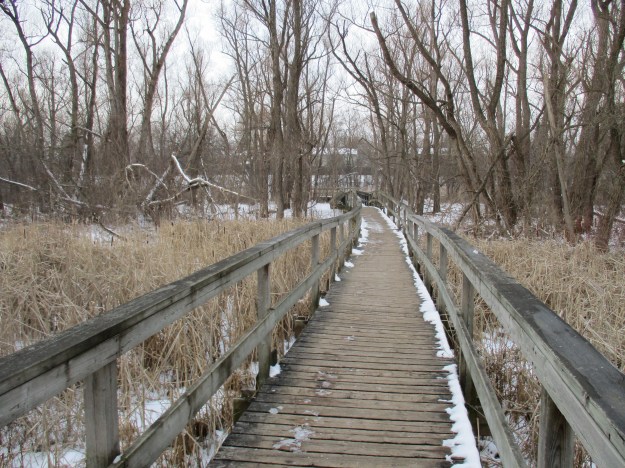
The original wooden crib dam at the bottom of the mill pond has been replaced with the modern concrete 5 sluice gate construction.
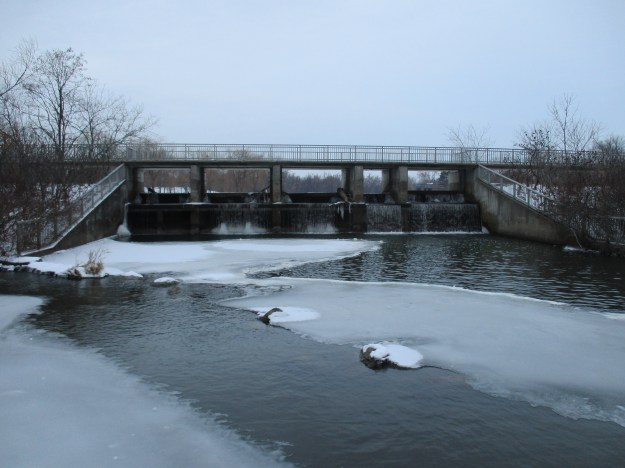
To allow the passage of fish around the Toogood Pond dam a fishway has been constructed. Fish can make their way up this little stream along the west side of the dam. At the top they have to make a small jump to get into the pond.

One of the reasons for the unique style of the buildings in historic Unionville is the 140 years that the Planing Mill produced the wood and gingerbread for local tradesmen. The original planing mill was built in 1840 by William Eaken and operated until severely damaged in 1978. The building was destroyed by a fire in 1983 but replaced with this modern structure in 1987.
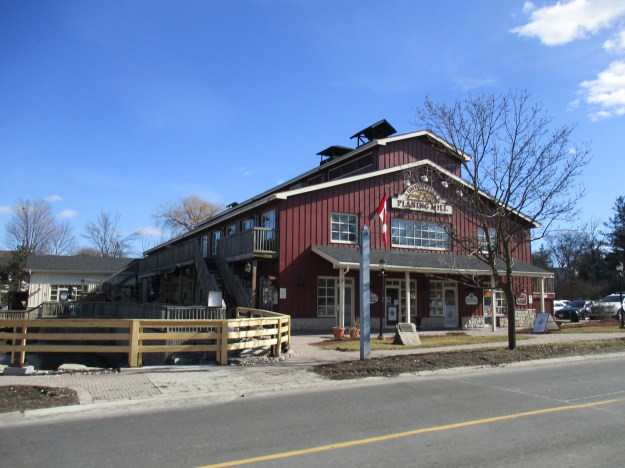
The Stiver Brothers grain mill is the last remaining one of its kind in Markham and a style of building more commonly seen along the railway lines in the prairies. Unionville was the centre of a rural farming community and around 1900 grain elevators began to appear beside the railway station. in 1916 Charles and Francis Stiver repaired a grain elevator beside the train station that had been damaged by fire. The Stiver Coal and Seed company was in the business both of buying and selling seeds. They provided seed for planting as well as animal feed. Originally the chopping work needed to make the animal feed was done at the Union Mills. When they were destroyed in a fire in 1934 the Stiver brothers added a feed mill to their operations. The Stiver Brothers closed the business in 1968 and by 1993 the building was empty and deteriorating. It has recently been restored and was opened again in 2014 as a cultural centre.
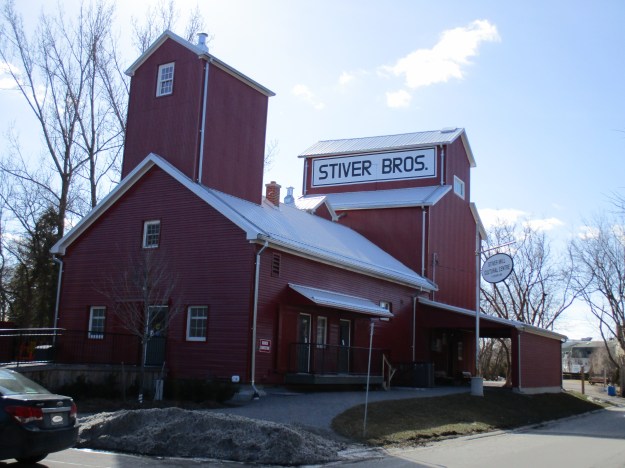
John Noble Raymer came to Markham township in 1809 and his cheese factory is believed to be one of the first in Upper Canada. John operated a family farm but in 1866 he traveled to Evans Mill, New York to study the art of cheese making. When he returned he opened a cheese factory on the family farm. It was so successful that he decided to expand with a second factory in Unionville. He purchased a half acre property on the east side of main street just above the Union Mills. In 1870 he built and opened his cheese factory in Unionville. After he died of smallpox in 1874 the business carried on until 1878 when it was closed and the building sold. The front wing and porch were added when it was converted into a home.
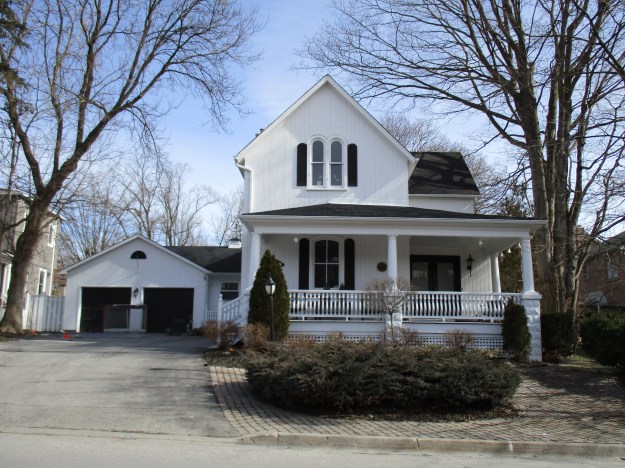
The Crown Inn is the oldest surviving inn in the community and it is also on the east side of Main Street just above the site of the Union Mills. It was built around 1860 by a man named William Size who lived with his parents in the Union House which was an inn across the street. He operated his hotel in direct competition with his parents. One of the first hotel keepers here was Avery Bishop whose great-grandson was Billy Bishop a World War One flying ace. The Toronto Island Airport is named after Billy Bishop.

The Union Mills may be gone but the mill pond and historic community it spawned remain almost untouched by time.
Google Maps link: Toogood Pond Unionville
Like us at http://www.facebook.com/hikingthegta
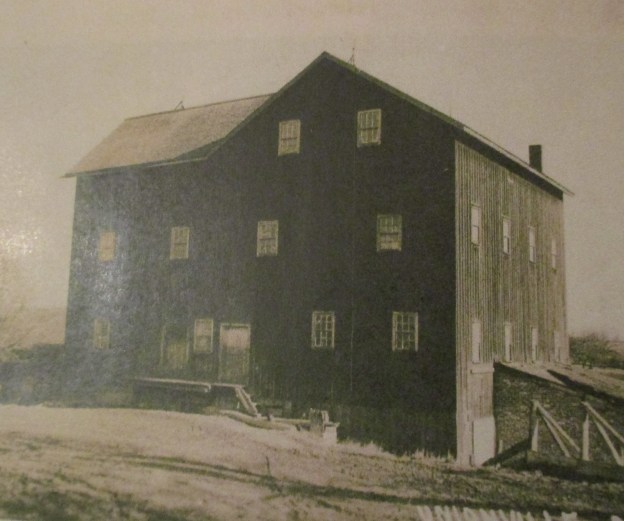
Pingback: Milne Dam Bridge | Hiking the GTA
Pingback: Log Cabins | Hiking the GTA
Pingback: Hagerman’s Corners – Ghost Towns of the GTA | Hiking the GTA
Pingback: Milne Dam Conservation Area 2022 | Hiking the GTA
Pingback: Toogood Pond Park | Hiking the GTA